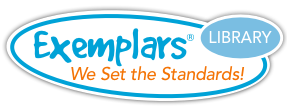Grade 2 - Measurement Unit
Standards covered:
- 2.9 Geometry and measurement
-
2.9A
Find the length of objects using concrete models for standard units of length.
-
2.9B
Describe the inverse relationship between the size of the unit and the number of units needed to equal the length of an object.
-
2.9C
Represent whole numbers as distances from any given location on a number line.
-
2.9D
Determine the length of an object to the nearest marked unit using rulers, yardsticks, meter sticks, or measuring tapes.
-
2.9E
Determine a solution to a problem involving length, including estimating lengths.
-
2.9F
Use concrete models of square units to find the area of a rectangle by covering it with no gaps or overlaps, counting to find the total number of square units, and describing the measurement using a number and the unit.
-
2.9G
Read and write time to the nearest one-minute increment using analog and digital clocks and distinguish between a.m. and p.m.
The Measurement Unit involves understanding the process of measuring—identifying the attribute being measured (such as length or area); identifying an appropriate unit (such as a unit of length or a unit of area); estimating the number of those units it will take to equal the object being measured; skillfully comparing the unit to the object being measured (no gaps, no overlaps); and using a number and unit to communicate the measurement to someone else. Questions to be answered may include:
- What is the difference between length and area?
- What are the critical attributes of appropriate units of length? Appropriate units of area? Appropriate units of time?
- What do you notice about the relationship between the size of the unit and the number needed to measure an object or distance?
Summative Assessment Task
Students determine which girl has the longest paper clip chain.
Instructional Tasks/Formative Assessments
Students determine how many flowers can be planted in each row of a flower garden.
Using pencils and markers laid end to end, students determine which boy is closest to a length of 100 centimeters.
Students determine what time a frog is able to climb out of a water hole.
Students determine which snail crawled the farthest.
Students determine the distance Josh needs to rollerblade to reach a friend's house.

The N/A classification refers to TEKS Standards that cannot be assessed through problem solving.
For this reason, tasks have not been included for these particular standards.
K.7A K.7B K.9B K.9C K.9D